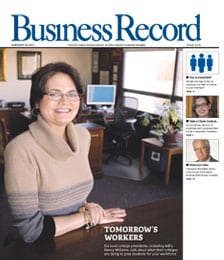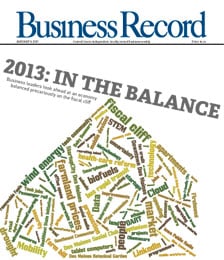House of Pancakes stacks up nicely

Dear Mr. Berko: What do you know and what are your thoughts about a stock called International House of Pancakes? My family and I had breakfast at one of these units when we were vacationing in Pompano, Fla., several weeks ago. The food (pancakes and omelets) was outstanding, and the prices were very modest. Do you think this stock would be a good investment? B.R., Durham, N.C.
Dear B.R.: About 15 years ago, I accidentally discovered the International House of Pancakes, or IHOP, and became an IHOP hippie. IHOP today is the Howard Johnson of pancakes, with a menu of succulent varieties (buttermilk, potato, cinnamon-apple and blueberry, to name a few) plus savory waffles worth a king’s ransom and omelet creations that would shame a French chef. I breakfast at IHOP about a dozen times a year and enjoy their creations garnished with their selections of various ambrosial syrups.
Casual dining at IHOP is inexpensive, service is quick and efficient, the food is always warm, and families with children are always welcome. IHOP is a fun place to eat, especially on Sunday after church, a post-ballgame lunch on Saturday or an evening snack after bowling or a movie with friends. And there’s a lot of money to be made cooking eggs, omelets, bacon, sausages, pancakes and waffles.
I’m not alone in my high-carb delirium, as revenues from this 24/7 franchise have grown from $83 million in 1991, increasing every year to $355 million in 2002. Earnings, which were 37 cents a share in 1991, have also increased annually and should exceed $3 this year.
IHOP has 1,025 restaurants in 41 states and several in Canada, where the market has attractive growth potential. Some 90 percent of these eateries are franchised, and they employ about 4,000 people. The traffic count has increased nicely in the past six years, and same-store sales have increased as well.
In fact, comparable-store sales increased 2.1 percent this last quarter, and management expects these trends to continue.
Net profit margins have increased by 50 percent in the past 10 years to 13 percent, and book value has increased sixfold to $16 a share. The company’s finances are strong, and the shares of this small-cap company trade just 3 points above its 12-month low.
IHOP expects to increase its presence in the Midwest (Ohio, Illinois, Indiana, Iowa, Arkansas, Michigan and Wisconsin), where management intends to open 45 to 55 company-developed units in the next 12 months. Additionally, IHOP expects to open another 45 company-developed units and 15 franchised locations in the South and Northeast. These new stores, plus expansion goals, should take IHOP’s revenues to the $550 million level in the coming four years. So if IHOP maintains the four requisites of a successful restaurant (good service, good food, clean and attractive locations, and fair prices), its earnings could easily grow to $3.60 a share by 2006, its book value could reach $28 and the stock price could double to the high $40s.
IHOP is a well-known and respected brand name, and its current strategy should create dependable, strong and profitable growth. The company has 21 million shares outstanding, and expansion over the coming four to five years should be accomplished without increasing long-term debt.
Meanwhile, the shares trade at 12 times earnings, which is historically at the low end of its historical price-earnings range. And at the current market value of $23.82, IHOP (symbol: IHP) seems to be a compelling long-term investment. Buy it.







